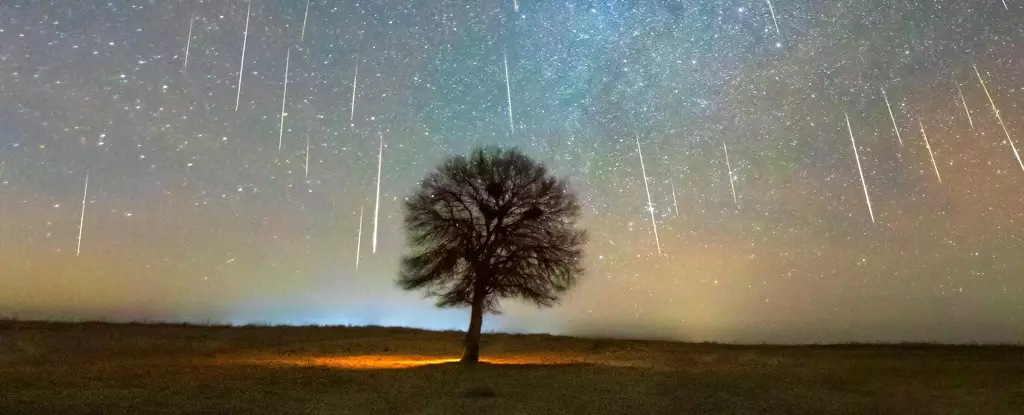Every December, stargazers and meteor enthusiasts eagerly await the arrival of the Geminid meteor shower. Known as the best natural fireworks display of the year, this mesmerizing celestial event attracts people from all over the world. And this year, the Geminids promise to be even more special as they coincide with the new Moon, creating a beautifully dark sky for optimal viewing. In this article, we will explore the origins of the Geminid meteor shower and provide tips on how to best enjoy this awe-inspiring spectacle.
The Origins of the Geminid Meteor Shower
The Geminid meteor shower occurs when Earth passes through streams of dust and debris left behind by the asteroid called (3200) Phaethon. This unusual object has a highly elongated orbit, bringing it closer to the Sun than Mercury at times and farther away than Mars at others. The extreme temperature fluctuations cause the surface of Phaethon to shatter, releasing dust into space. Over time, this dust has spread all around Phaethon’s orbit, creating a thick debris field.
While Earth passes through the debris left by Phaethon for several weeks, the peak of the Geminid meteor shower occurs during a two to three-night period around mid-December. During this time, the density of the debris is at its highest, resulting in more than 100 meteors per hour in the northern hemisphere. Even from Australia, keen-eyed observers can still witness more than 50 meteors per hour at the peak. However, to see the meteor shower, it is crucial to wait until the constellation Gemini rises in the sky, as this is where the meteors will appear to radiate from.
Tips for the Best Viewing Experience
To maximize your chances of seeing a significant number of Geminid meteors, it is essential to consider the position of the radiant and the darkness of the sky. The radiant is the point in the sky from which the meteors appear to originate. When the radiant is at its highest point, usually due north, the viewing conditions are optimal. To find the radiant, locate the constellation Gemini and look towards the northeastern part of the sky after it rises. For the best view, position yourself so that you are looking about 45 degrees to the left or right of the radiant.
The peak rate, which estimates the number of meteors visible per hour during the radiant’s highest point, assumes ideal viewing conditions with a dark, clear sky. Factors such as light pollution, imperfect eyesight, and cloud cover can impact the actual number of meteors seen. It is recommended to arrive at your chosen viewing spot at least one hour after the radiant rises to allow time for your eyes to adjust to the darkness.
To find the perfect location for meteor watching, refer to a light pollution map to identify areas with minimal light interference. Consider heading out to a camping spot or a remote location away from city lights. The darker the sky, the better the visibility of the meteors.
Astronomy is Better Shared
To enhance the experience, invite your friends or loved ones to join you in witnessing the Geminid meteor shower. Watching this celestial spectacle together can be a bonding experience and create lasting memories. With summer in full swing in Australia, a camping trip under the starry sky could be the perfect way to enjoy the show.
The Geminid meteor shower is a must-see event for anyone fascinated by the wonders of the night sky. As Earth passes through the debris field left by the asteroid (3200) Phaethon, the Geminids provide a breathtaking display of shooting stars. By following our tips and choosing the right time and location, you can optimize your chances of witnessing this extraordinary celestial phenomenon. So, mark your calendars and prepare to be amazed by the splendor of the Geminid meteor shower this December.


Leave a Reply